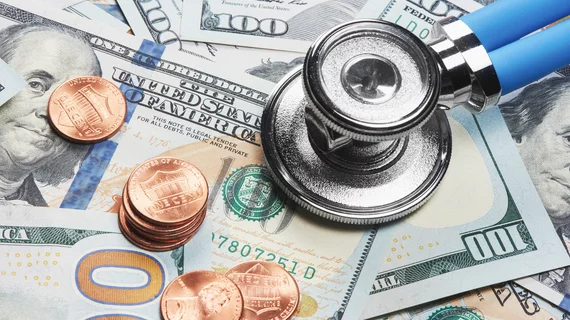Healthcare executive salaries up in 2022
Healthcare executives are enjoying higher compensation in 2022 thanks to an increasingly competitive job market.
That’s according to the 2022 Health Care Management and Executive Compensation Survey from SullivanCotter, an independent consulting firm for healthcare and not-for-profits. The survey revealed median base salaries were up 4.5% in 2022 for healthcare executives.
The higher base pay comes at a time when healthcare organizations are facing staffing shortages and have been boosting pay in an effort to attract and retain staff. In particular, traveling nurses have become in demand throughout the pandemic to fill specific roles. Hospitals and health systems are effectively raising compensation to build back their staffing levels to pre-pandemic times, according to SullivanCotter.
In addition to higher base pay, incentive payments were up in 2022 after payouts were down in 2021 due to lower financial and operating performance from the COVID-19 pandemic. However, 2021 performance bounced back to historical levels and improved, increasing median total cash compensation (equal to base salary plus annual incentives) by 9.7%, according to the survey.
"Although total cash compensation for executives grew year over year, it is important to note that there were no shifts in annual incentive plan prevalence or award opportunity levels,” Bruce Greenblatt, managing director at SullivanCotter, said in a statement. “The growth in reported total cash compensation is being driven by higher incentive awards that reflect improved organizational performance after a particularly challenging year. Thus, it shows that the performance-based incentive programs are operating as designed by tempering awards in challenging years and increasing them when performance improves.”
While incentive payout increases drove overall higher compensation, executive base salary increases were also higher than 2021 levels due to high demand for talent and better financial performance. Some healthcare organizations froze executive salary increases in the past few years due to pandemic hardships, but talent demand has outpaced supply as a result of burnout, accelerated retirement and the need for high-level leaders to take on more complex issues.
Health system executives saw higher base salary increases compared to subsidiary hospital executives by 1%, according to SullivanCotter. While overall base salary rose 4.5%, annual growth among many clinical roles was higher, 5% or more, including for registered nurses, whose base salaries rose more than 8%.
The rise in compensation underscores the current labor market changes in the healthcare industry and the broader economy, but the impacts of those changes are still ongoing. And looking ahead, health systems and hospitals are still facing uncertainty in regards to staffing, inflation and higher costs.
To plan for the future, healthcare organizations should count on increasing salary budgets more than the recent norms of 3% to retain key talent, address pay equity and counter inflation. Plus, organizations need to create an incentive plan that reflects the current challenges and accounts for patient satisfaction, financial performance and growth.
"While these are industry-wide issues affecting the clinical workforce and staff-level positions as well, organizations must be acutely aware of the impact these challenges may have on executive compensation programs and recruiting and retention strategies,” Ted Chien, president and CEO of SullivanCotter, said in a statement. “This is particularly important as they look to limit disruption and remain focused on providing the highest quality patient care, improving employee engagement, and advancing other important initiatives designed to support DE&I and ESG.”

